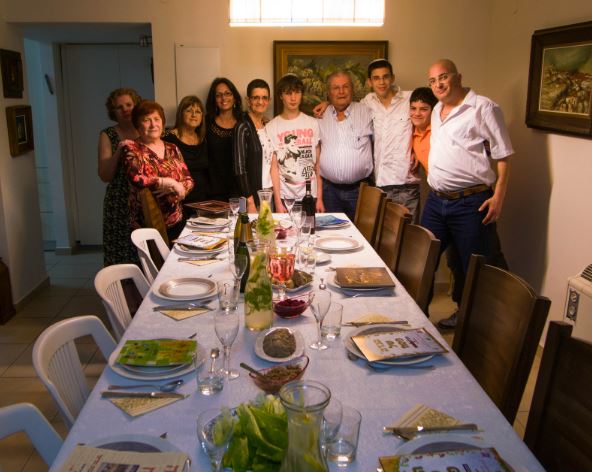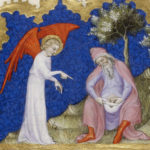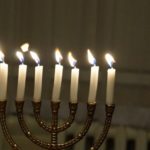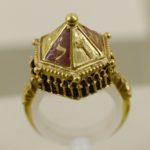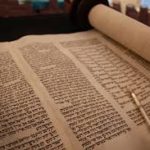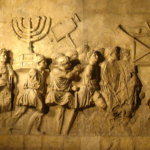Few people realize that Christians and Jews share a holiday. Fifty days after the Jewish Passover is the holiday of “Shavu’ot”, which translates into English from Hebrew as “Weeks”. Christians know this holiday as “Pentecost” which is Greek for “fiftieth day”. This holiday marks the completion of the counting of the omer which begins after Passover. Seven weeks are counted (49 days) and the day after the counting (the 50th day) begins Shavu’ot. This day commemorates the day that Moses received the 10 commandments at Mt. Sinai. The Christian Pentecost happens fifty days after Easter rather than Passover and commemorates the giving of the “Holy Spirit” (Acts chapter 2), but the origin of the holiday remains with the Biblical commandment to count fifty days from the beginning of Passover.
I’d like to submit some non-conventional thoughts for you to contemplate (Jews & non-Jews alike).
The Jewish version of this holiday focuses greatly on the life of Rabbi Akiva Ben Yoseph Ben Avraham. Many kabbalists believe him to be a reincarnation of Moses. Like Moses, Rabbi Akiva began his studies at the ripe age of 40. He studied Torah for twelve years at the yeshiva (Hebrew school). At the end of the twelve years, he overheard his father-in-law say that he should go back and study another twelve years. The Talmud tells us that upon hearing this he immediately turned back, not even crossing the threshold of the door to the yeshiva and began a second twelve years of study.
Upon his leaving the Yeshiva, he apparently acquired 24,005 students/disciples and became a great pillar of Torah teaching. During the Counting of the Omer one year, during the Bar Kokhba Revolt against the Romans, we learn that his students began dying in a plague. The reason for their death is given in the Talmud states that it was because they did not have respect for one another.
Then on the 33rd day of the counting, the plague stopped. This day is commemorated as Lag B’Omer (the 33rd day in the Omer). The final death toll is given at 24,000, leaving Rabbi Akiva only 5 students remaining, which he then continued to teach.
So, here are some thoughts on this story for you contemplate tonight if you wish…
The name “Akiva” means “protection” but comes from a verb meaning to turn, encircle, surround, etc. It’s root is in the idea of a circle or orbit. It is a variation on the name Ya’akov (Jacob).
Yoseph is from the verb meaning “to add” or “to count” (appropriate for a holiday based on counting).
Why does the legend make the point of stating that Akiva did not even cross the threshold of the Yeshiva before turning back to study for another twelve years? The Hebrew word for “Year” is “Shanna”, which actually means “divisions”. Twelve “years” could very easily refer to the twelve moons or “months” of the Zodiac. Twelve-star signs follow the circle of the zodiac. The Passover holiday is based on the beginning of the spring sign (Aries) which is commemorated in the eating of the Passover Lamb. This marks the beginning of the counting of seven weeks.
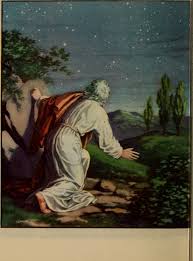 Avraham means “father of many” and alludes to the Abraham of the Bible who is at the root of Judaism, Christianity, Islam, and arguably Hinduism, Buddhism, and other eastern religions as well (Genesis 25). The Covenant that Abraham received from G-d is that his descendants would be “as the stars in the heavens”.
Avraham means “father of many” and alludes to the Abraham of the Bible who is at the root of Judaism, Christianity, Islam, and arguably Hinduism, Buddhism, and other eastern religions as well (Genesis 25). The Covenant that Abraham received from G-d is that his descendants would be “as the stars in the heavens”.
Akiva’s name means “Akiva son of Joseph, son of Abraham” perhaps implying that he should be “counted” as one of those stars.
Akiva was the spiritual leader of the people during the Bar Kokhba Revolt. Bar Kokhba was the military leader. Bar Kokhba means “Son of the Star”. Rabbi Akiva considered Bar Kokhba to be the Messiah. The idea of “messiah” connects Bar Kokhba to the sun (The Star).
Each day of the week is ruled by one of the seven planets. Sunday (sun), Monday (moon), Tuesday (Mars), Wednesday (Mercury), Thursday (Jupiter), Friday (Venus), Saturday (Saturn).
The Bar Kokhba revolt was initiated because the Romans were going to convert the Jewish Temple which was dedicated to “Jehovah” to a temple for Jupiter.
What’s the connection between the Hebrew Jehovah and Roman Jupiter?
The 360 degrees of the solar (THE STAR) ecliptic is divided into 12 “houses” or signs whose boundaries are called “thresholds”. Each house covers 30 degrees of the circle. There are three degrees between the “houses” called cusps which are considered to be times of transition (or “death”).
The Talmud states that the students were dying the entire thirty-two days, and on the 33rd day they stopped dying. Some sages ask why it words it this way, instead of saying that so many students died on this day and so many on that day. It says that the 24,000 were dying as if it took them thirty-two days to die. Remember “dying” is also an astrological term.
This whole story is rich with astrological terms.
What is it really trying to teach us?

